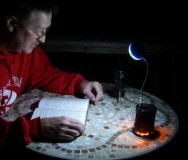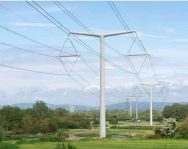Gas generators are a power option
Peaking power and grid parallel applications
Suited to peaking power applications, gas generators can be used as back-up power systems, supporting the grid during times of high demand, as well as offsetting the fluctuations of renewable power sources such as wind and solar energy. Working with TMS Grid Ltd., an engineering and consultancy company based in the U.K., 10 HSK78G units will provide a total of 20MW of uninterruptible backup power. Alongside the product’s high efficiency, the generators’ Grid Code Compliance (GCC) certification enabled TMS Grid Ltd. to demonstrate compliance to the G99 U.K. requirements. Additionally, the HSK78G units meet the latest emissions limits set by the new medium combustion plant directive (MCPD) removing the need for exhaust aftertreatment systems, which in turn offers a lower total cost of ownership.
A further 11 units have recently been installed in a hybrid power station based in Western Australia, offering a total of 22MW installed capacity. With a mix of solar, wind and battery technology, the HSK78G generator models will be used to stabilise the power supply, providing fewer voltage and frequency disturbances and faster recovery times.
With increased demand for low-carbon power generation, organisations across all industries are seeking alternative sources of energy to reduce their carbon footprint whilst providing a reliable and robust performance. To meet this need, Cummins invested heavily in expanding its gas range, launching the HSK78G gas generator range in March 2019.
With a power density of up to 2MW, Cummins lean-burn gas generators are designed to provide reliable power for a diverse set of industries from mining and manufacturing, to shopping malls and hospitals. With fuel flexibility across the range, HSK78G generators use natural, low-cost, low-BTU, free fuel sources that would otherwise be considered waste products.
‘We’re seeing increased interest from a diverse range of industries, all of which are considering the switch to low-carbon alternatives for power generation. With market-leading thermal efficiency at 47.1% and 2110 kW of thermal output for heating, cooling and steam generation, the generator series provides significant environmental benefits. They can also run in parallel with combined heat and power (CHP) systems, which can convert 70-90% of the energy of the fuel that is burned into useful electricity or heat, further increasing sustainable credentials,’ said Ann-Kristin deVerdier, Cummins Energy Management Executive Director.
The HSK78G has been successfully installed across a wide range of applications, from horticultural, logistics and manufacturing operations, through to providing gas power for power stations and backup power to the National Grid.
‘We’ve worked hard to develop a solution …











 More than half of energy-rich state’s total power generation capacity remains offline
More than half of energy-rich state’s total power generation capacity remains offline